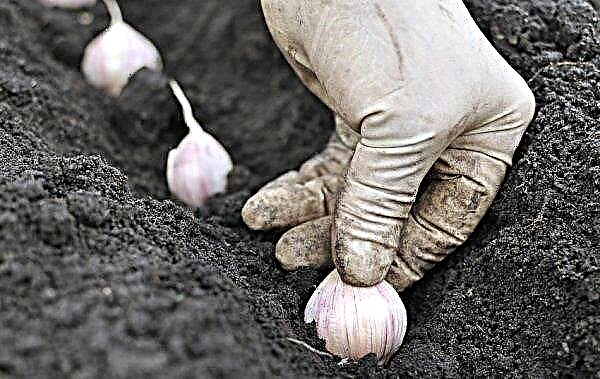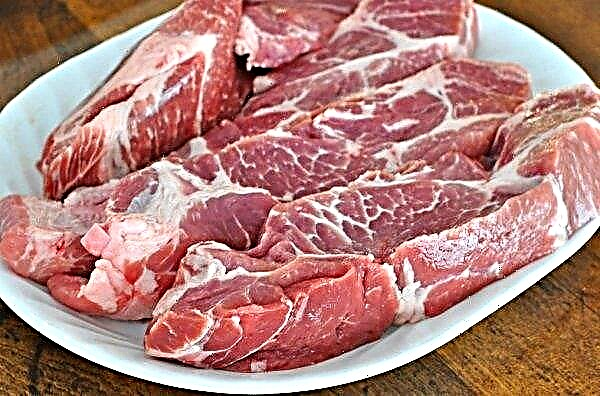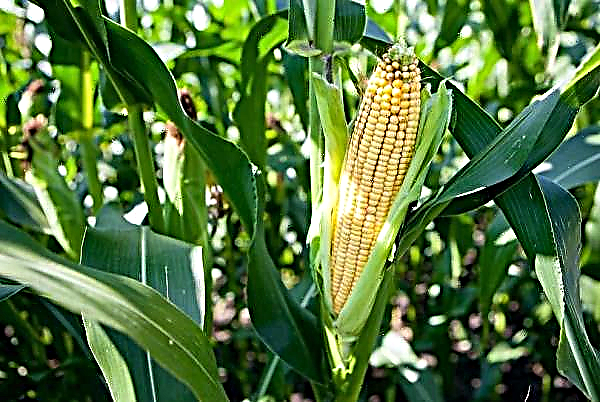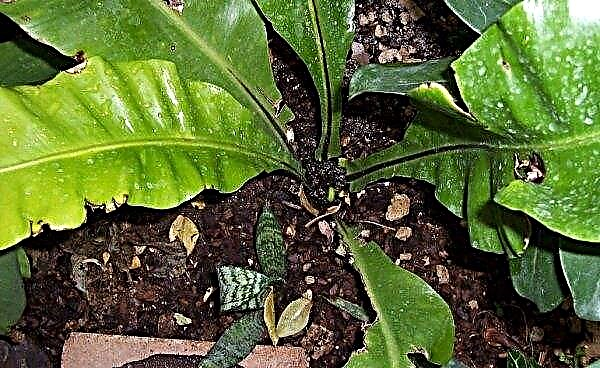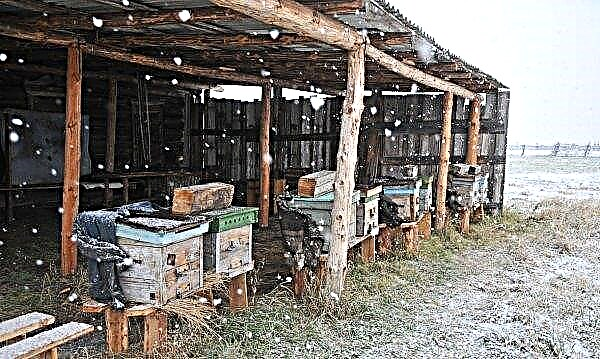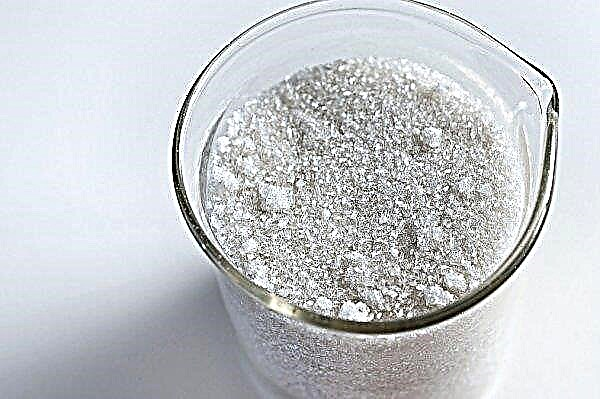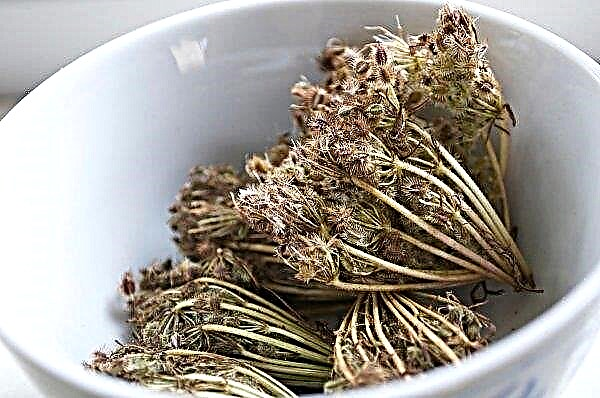Eggplant Fabina f1 refers to early ripening hybrids adapted to various microclimatic conditions. The vegetable feels great both in open and in closed ground. About the features of cultivation and the main characteristics of this variety of eggplant read below.
Description and characteristics of the variety
Fabin eggplant was bred in France about 20 years ago. Initially, eggplant of any kind was cultivated only in the southern regions of Russia. But over time, they began to grow in the central regions, and then in the north. In 2007, the state registry of the Russian Federation allowed the cultivar Fabin to be grown in the North Caucasus District.
The described plants are of medium height (about 60 cm), sprawling type, which allows them to be placed according to the scheme 100 × 40 cm.The main feature of this variety is the ability of the bush to withstand loads of up to 9 fruits without garters and additional supports. Shoots are covered with large green leaves with corrugated edges. Young plants do not tolerate sudden changes in temperature, so you need to plant seedlings in open ground, starting from May 25.Did you know? Only culinary specialists attribute eggplant to vegetable crops — according to the botanical classification, these fruits are berries.
The flowers are large, bisexual, measuring 2.5–5 cm. They are located singly or form inflorescences, including from 2 to 7 flowers.
Photo gallery
The fruits are large, elongated-cylindrical in shape. The length of an eggplant that has reached technical maturity can vary between 20–23 cm, less often 25 cm. The diameter of the fruit is 5–6 cm. The skin is dense, thin, purple in color, has a smooth structure, without hollows and tubercles. The flesh is white with a pale green tint. The structure of the pulp is dense, juicy.
The variety is genetically devoid of bitterness. The taste of the pulp is very tender, literally melts in the mouth. Fruits are characterized by good shelf life, up to 90%, and resistance to mechanical damage, which allows them to be transported over long distances.
The fruits are actively used in cooking, mass production of diet food and winter preparations, as well as in commercial activities.
The variety is resistant to verticillium wilt and spider mites, which greatly simplifies the cultivation and care. In the field, Fabina f1 bears fruit before the onset of frost.
Ripening period
The early ripe hybrid reaches technical maturity in 50 days, physical - in 70. Fruits that have reached a length of 10-15 cm are suitable for consumption: their flesh is more tender and juicy.
Productivity
The total yield is 6 tons per 1 ha. Such a high level provides an extended fruiting period.
Did you know? Even with low calorie content, eggplant can replace meat in the human diet in terms of nutritional value and trace elements.
Crop care
The highest variety performance is noted when growing by seedling method. Seeds are planted in a common container at a distance of 3-5 cm from each other. A mixture for seed germination is prepared from:
- 3 parts of garden soil;
- 2 parts of peat;
- 1 parts of sand.
 Eggplant should not be planted after solanaceae and potatoes. It is better to give preference to areas where legumes were grown. If the plot is not so large, then after solanaceous, it is necessary to cultivate the soil, and then sow rye or winter wheat. 2 weeks before frosts, the soil is cultivated and by spring a cleaned area is obtained, fertilized with decayed plant material.
Eggplant should not be planted after solanaceae and potatoes. It is better to give preference to areas where legumes were grown. If the plot is not so large, then after solanaceous, it is necessary to cultivate the soil, and then sow rye or winter wheat. 2 weeks before frosts, the soil is cultivated and by spring a cleaned area is obtained, fertilized with decayed plant material.An ideal place for growing eggplant is a plot protected from draft and wind, well lit by the sun. Best eggplant fruit on loamy and loamy soils.
Prepare the site in the fall. First, weeds are harvested, then digging is carried out to a depth of 20 cm and sprayed with a solution of copper sulfate. After a week, 10 kg of fresh manure are added per m² and dug again by 20 cm. In spring, a similar procedure is carried out, only copper sulfate is replaced by Fitosporin-M (the drug is diluted with water 1: 2 and infused for 1 hour), and instead of fresh manure is used rotted or dry. When transplanting, 1 tbsp is added to each well. wood ash or 50 g of superphosphate. Immediately after planting in a permanent place, seedlings need to be watered, about 0.5 liters per bush. When the liquid is absorbed and the earth dries out a little, you need to loosen and mulch the soil. You can use compost or fresh, juicy grass as mulch. The layer of mulch should be at least 8 cm. This technique will save moisture in the soil and protect plantings from pests and diseases. Soil cultivation is carried out after each irrigation and rain.
Immediately after planting in a permanent place, seedlings need to be watered, about 0.5 liters per bush. When the liquid is absorbed and the earth dries out a little, you need to loosen and mulch the soil. You can use compost or fresh, juicy grass as mulch. The layer of mulch should be at least 8 cm. This technique will save moisture in the soil and protect plantings from pests and diseases. Soil cultivation is carried out after each irrigation and rain.
Watering is carried out once a week for young plants and once every 10-12 days - for adults. In the stage of active fruiting, the irrigation intensity is again increased to 1 time per week. Water should be warm and not differ in temperature from the environment by more than 5 ° C. Watering is carried out under the root of a watering can with a long nose. Sprinkling this crop is contraindicated.
Fertilizers are applied only 3 times throughout the season:Important! Moisture on the leaves adversely affects the immunity of plants. Stagnation of moisture in the leaf sinuses leads to the appearance of rot on the shoots.
- 10 days after planting in a permanent place - 40 g of urea per 1 m² or 0.5 l of liquid mullein solution;
- 20 days after the first - 5 g of potassium salt and 40 g of superphosphate per 10 l of water;
- in the fruit setting stage - a yeast solution (25 g of yeast per 10 l of water + 1 tbsp of sugar).

Diseases and Pests
Failure to comply with agricultural regulations leads to infection of the plant with the following fungal diseases:
- Phytophthora - progresses in conditions of high humidity. Removing the ailment will help removing 5 cm of soil and replacing it with a mixture of peat and sand (1: 1), removing the affected parts of the plant and treating it with a 3% solution of Bordeaux liquid 3 times with an interval of 20 days.
- White rot - It affects the roots of young seedlings planted in cold soil. To save the plants, you need to remove the affected branches, leaves and dust the plants with a dry mixture of wood ash with Fundazole (1: 1). After 10 days, a 3% solution of Bordeaux fluid is treated.
- Anthracnose - transmitted when crop rotation is not observed. Processing plants with 0.3% HOM solution will help save the plants.
 Among the pests dangerous for eggplant varieties Fabina are:
Among the pests dangerous for eggplant varieties Fabina are:- Colorado beetle - It is eliminated with the help of several sprayings with a solution of the “Aktara” preparation (8 g / 10 l of water)
- the bear - Medvetox is used against an insect (the substance must be buried 4 cm into the soil).
Collection and storage
Harvesting should begin when the fruits have reached technical maturity. They are cut with a sharp knife along with the stem. This approach allows you to make room for new ovaries and fully reveal the potential of plants in terms of yield. In the future, the fruits are harvested as they ripen, approximately every 10-14 days.
Eggplant is not a vegetable crop for long-term storage - it is better to immediately send the fruits for processing. But if there are a lot of products, you can put them in a deep box with a loose layer and fill it with wood ash. In dry, cool rooms with a relative humidity of 50% and air temperature up to + 7 ° С they can be decomposed directly on the floor on straw. When using such methods, there are no guarantees that determine the duration of storage: vegetables can lie for 2 weeks without losing their qualities, but they can also be stored for 2 months. It is better to still prefer dry freezing or preservation, and store eggplant fresh for no longer than 2 weeks.Important! Overripe fruits accumulate solanine, so you should not leave them for long on the branches: the use of such products can cause poisoning.
 The Fabin f1 eggplant variety is attractive for its high yield, comparative unpretentiousness in care and the ability to adapt to different microclimatic conditions. Subject to all the rules of agricultural technology, the culture is practically not affected by diseases and pests.
The Fabin f1 eggplant variety is attractive for its high yield, comparative unpretentiousness in care and the ability to adapt to different microclimatic conditions. Subject to all the rules of agricultural technology, the culture is practically not affected by diseases and pests.

